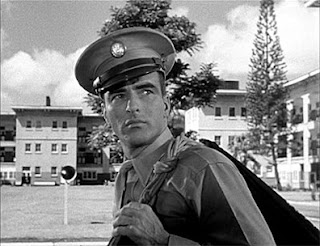***
Zinnemann is sometimes compared and contrasted with Howard Hawks, as them being the antithesis of each other, and the fact that Hawks’s Rio Bravo (1959) was to some extent made as a response to Zinnemann’s High Noon [1952] is often invoked. Yet the two filmmakers are more alike than this would suggest. As filmmakers they were independent, and they made films about people who did not accept the conventional rules and hierarchies of society but lived by their own personal moral codes. Hawks has always focused on professionalism and it could be argued that Zinnemann has shown a similar interest in professionalism. Both Hawks’s and Zinnemann’s characters are men and women completely dedicated to their tasks, and loyal to their beliefs and responsibilities. Finally, while their styles are different from one another, their relation to space is quite similar. That is, they do not have an interest in pictorialism or scenery; they are not landscape filmmakers like John Ford or Anthony Mann. Neither does the space in their film take on a metaphysical meaning as in the films of Michael Powell or David Lean. It does not come alive as it does in the films of Akira Kurosawa. Instead they can seem rather indifferent to the surroundings. What matters to them both are the actors and the characters that these actors embody and space has no meaning in its own right, it is just the place in which the characters happen to be. In a telling quote, Zinnemann once said to cinematographer Ted Moore, when making A Man For all Seasons [1966], that it is ‘[n]ot important where people are’. Instead space is only where the characters happen to be and it is their inner struggle that matters. (Five Days One Summer (1982) is an interesting exception however, a film in which the landscape is unusually important and almost becomes the central character.) But, like with Hawks, the space can often be seen as claustrophobic, as if the characters are trapped. In Hawks it is the world at large that is hostile (and the characters have sometimes created their own private space) whereas in Zinnemann it is the institutions, which the main character is a part of, that are keeping them down and contained (and there is no private space).
In Zinnemann’s case the view of space is linked to his overarching interests in ethical dilemmas and procedures. He is, again like Hawks, almost exclusively interested in people under pressure and how they deal with that pressure, whether it is as a drug addict in A Hatful of Rain (1957), a refugee from a concentration camp in The Seventh Cross (1944), a marshal in High Noon, a chancellor in A Man for All Seasons, to name a few examples. His focus on characters and their interiors is emphasised by his extensive use of close-ups. Sometimes characters seem to be cut off from their surroundings, floating in an unspecified space, especially with the close-ups of heads and faces. In High Noon there are a few “floating heads” shot, which means that the camera is focused so tightly on the heads of the actors that not much else is seen so they appear to be floating in space. In A Man for All Seasons cardinal Wolsey (played by Orson Welles) sometimes seems to consist of a head only, and his red dress is absorbed by the red walls. (Although the film begins with a close-up of first his medallion and then his hands, his face is not shown.)
/.../
[But there are obvious differences between them too and Zinnemann's focus on individuals is where] he differs the most from Hawks. Hawks’s films almost always focus on a group, and the characters are seen as being together. Being alone is not a condition a character in a film by Hawks finds himself in, whereas in Zinnemann’s films the opposite is true. The quintessential image from a film by Hawks is of a group, in complete harmony, but in Zinnemann’s films it is of a lone individual estranged from his surroundings, strikingly emphasised for example in the opening shot of From Here to Eternity [1953] where Prewitt (played by Montgomery Clift), a lone man, is walking vertically through the shot while a long line of men are walking horizontally in the foreground.
The marshal in High Noon, abandoned by everyone.


